Central Oradea (Nagyvárad or Großwardein) in images.
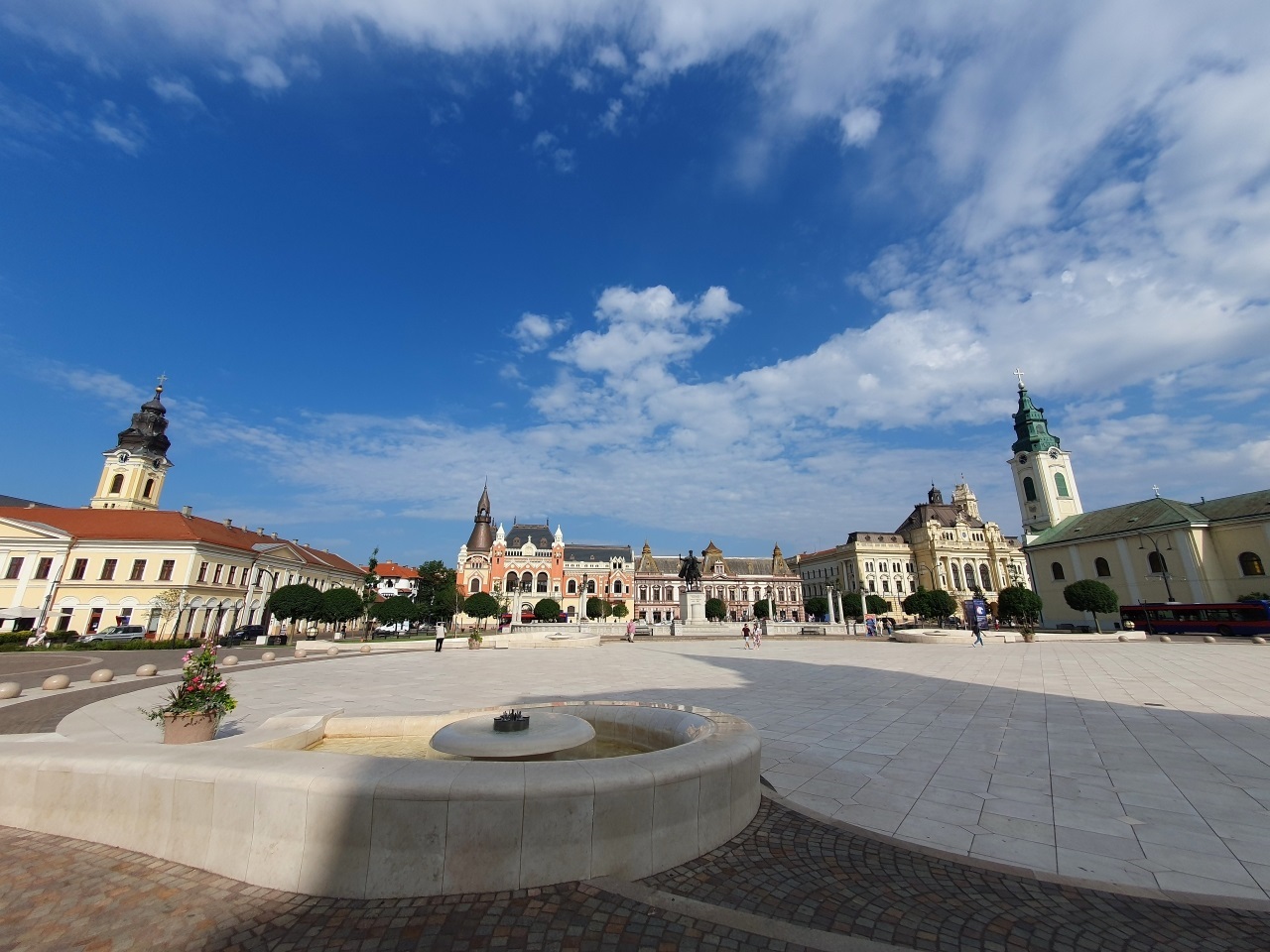
Probably the typical Oradea view, with, from left to right, the tower of the St. Nicholas Greek-Catholic Cathedral (built in 1803), Kováts House in front of it, the Greek Catholic Episcopal Palace (the red one in center, built in 1905), the former Savings Bank of Oradea, the Town Hall of Oradea (built in 1902 in an eclectic, mainly neo-Renaissance style) and finally in the foreground the St. László (Saint Ladislaus) Roman-Catholic Parish Church (built in 1717).
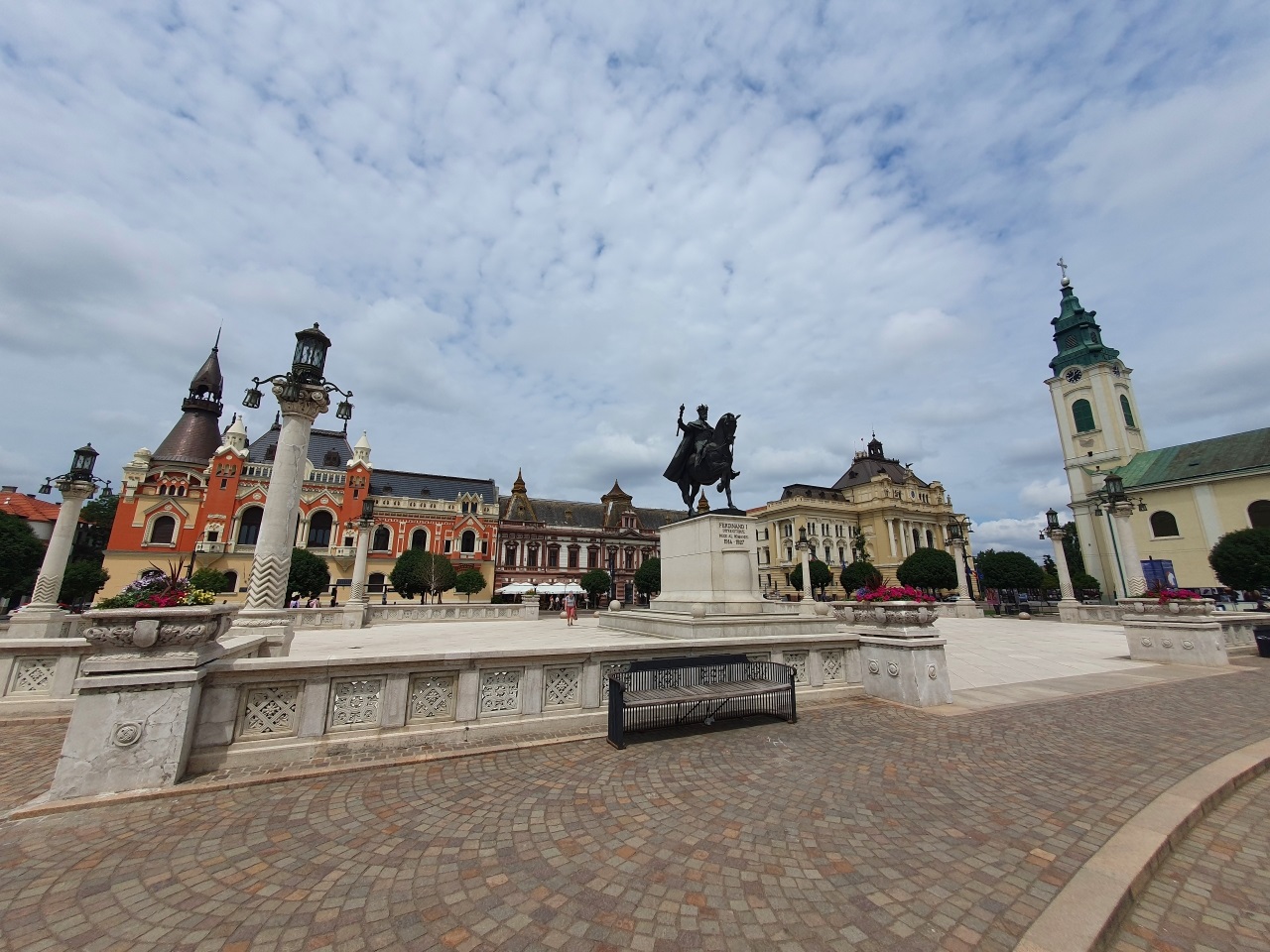
Coming a little closer and advancing through the Unity Place with the statue of King Ferdinand of Romania in the center.
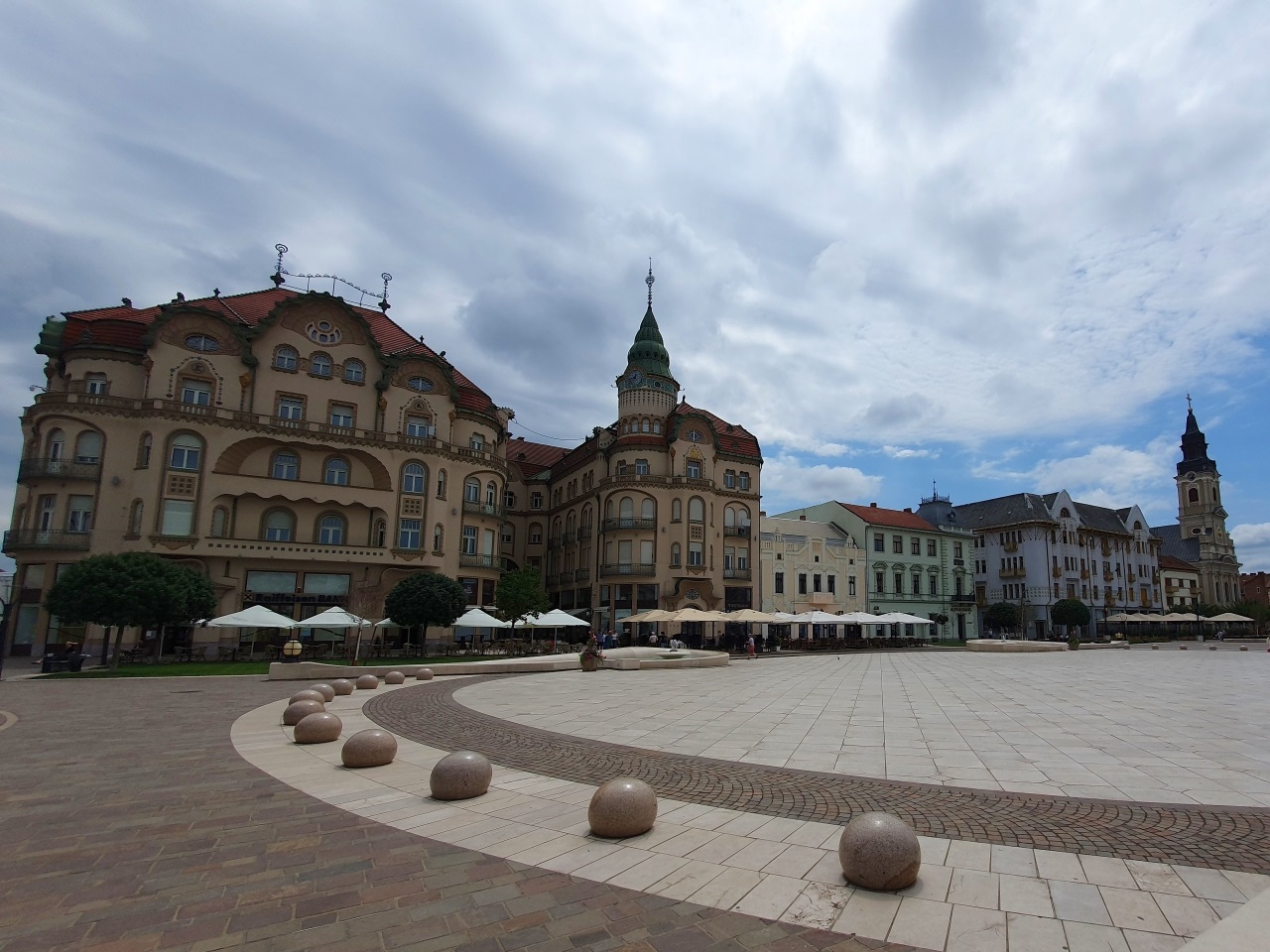
Turning back so as to see, from left to right, “The Black Eagle” Palace (built in 1907 in Art Nouveau/Secession-style and a symbol of Oradea), the Moskovits Palace (the blueish one, built in 1910) and the “Moon Church” (Dormition of the Mother of God) Orthodox Church (built in 1784, another symbol of Oradea, having on the façade a one-meter diameter sphere painted black and gold, which is moved by a still-functioning mechanism that shows the actual moon phase).
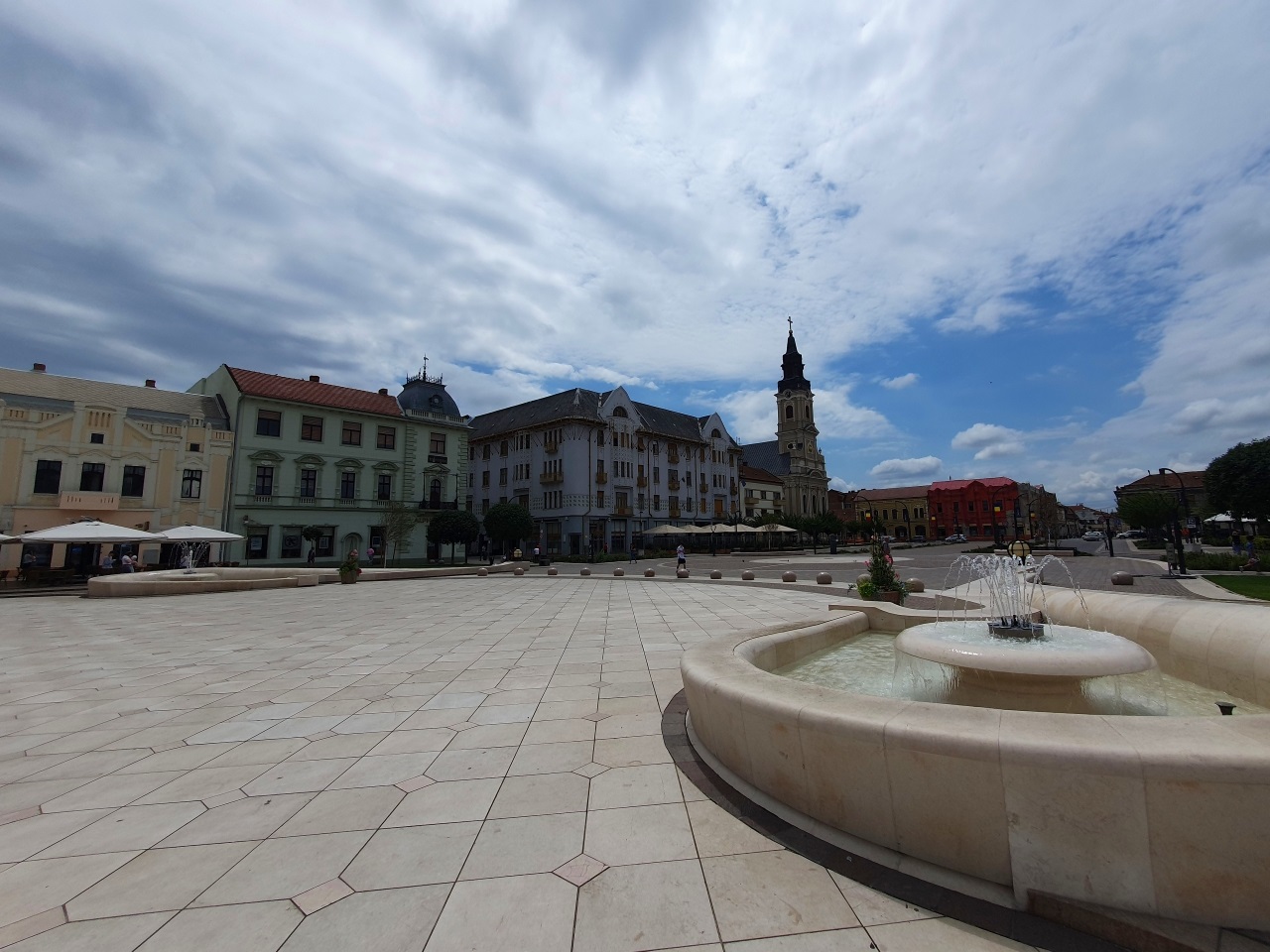
A deeper perspective towards the south of the square.

The former Greek Catholic Teacher Training Academy, now the Iuliu Maniu Greek Catholic High School (built in 1934 in the the Brancovenesc style) and a corner of the St. Nicholas Greek-Catholic Cathedral.

An unusual view of Oradea, with several towers in the background.
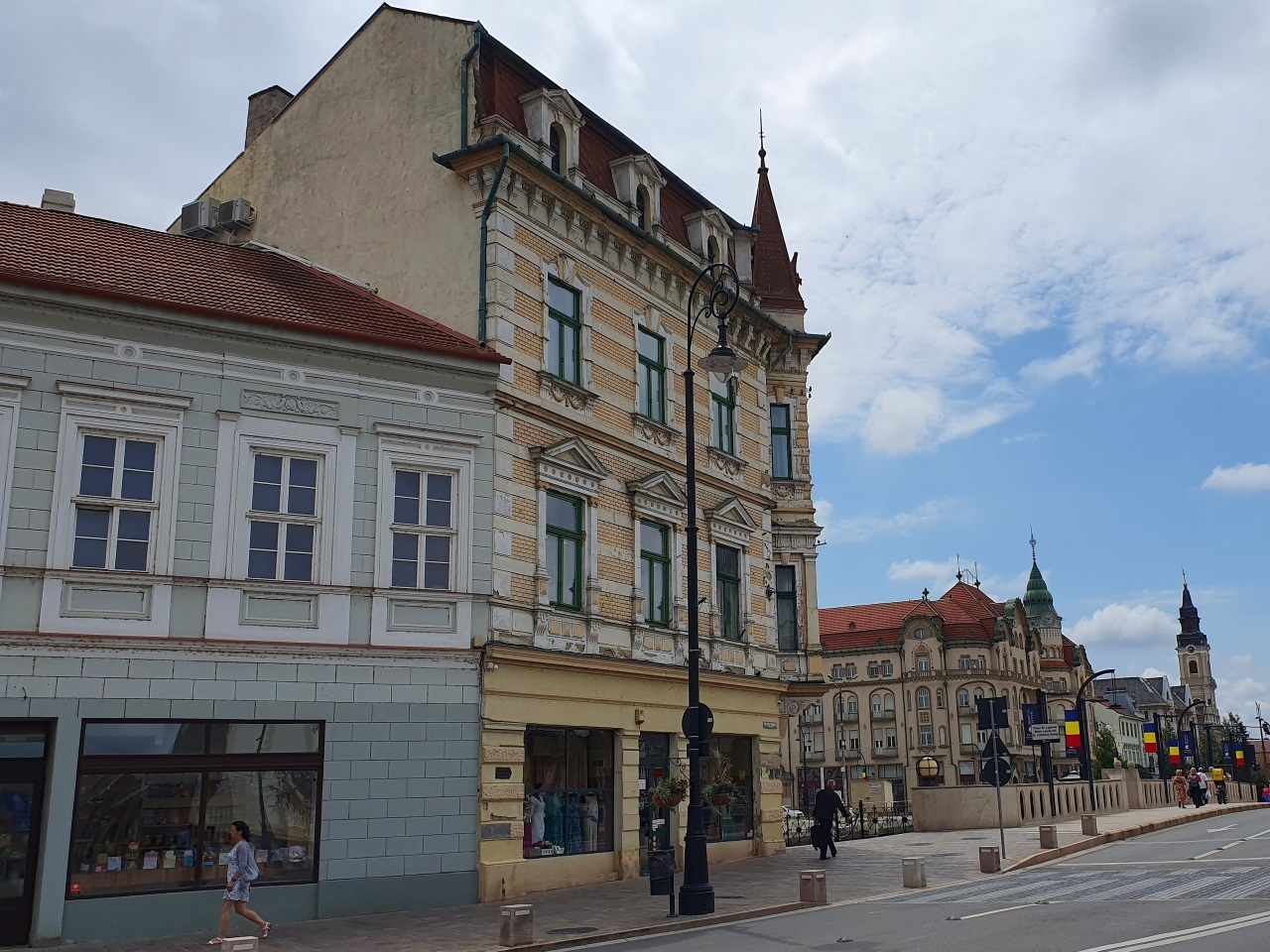
The Lévay House (built in 1893) with the Ferdinand bridge over the “Rapid” Criș River to the right.

King Ferdinand Square with the former Central Savings Bank (former Apollo Cinema, the yellowish building in the center) and the former Hotel Pannonia (built in 1903 in Florentine Renaissance style, to the right). In the center is the statue of Queen Mary of Romania, facing backwards.

The former Hungarian Szigligeti Színház (Theatre), now the Queen Mary State Theatre, built in 1899, with the bust of Szigligeti Ede in front and the Sztarill Palace (Astoria Hotel) built in 1903 in the Art Nouveau style, to the left.
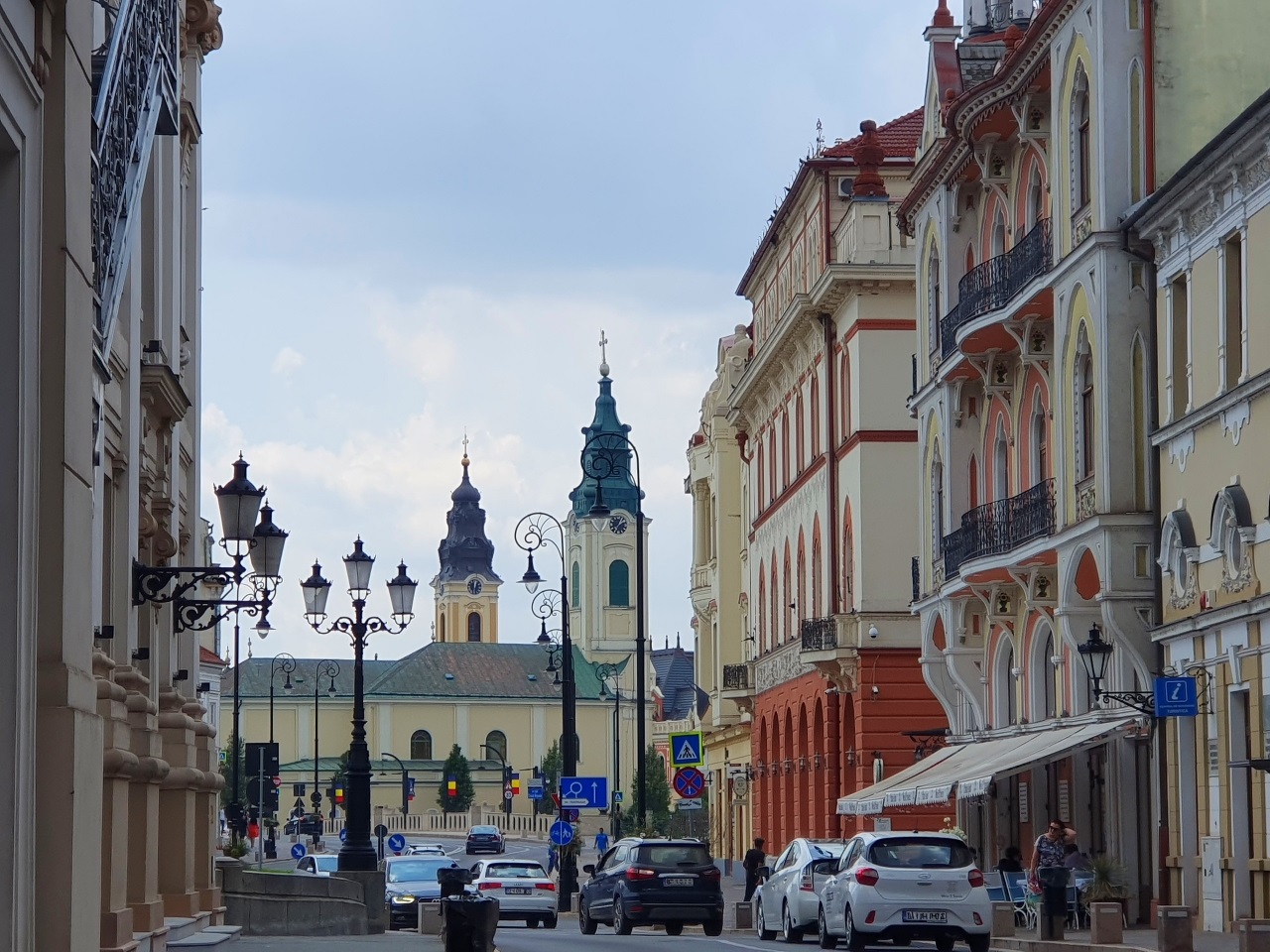
One of the most beautiful views of Oradea, between the State Theatre to the left and Adorján House to the right (not seen here).
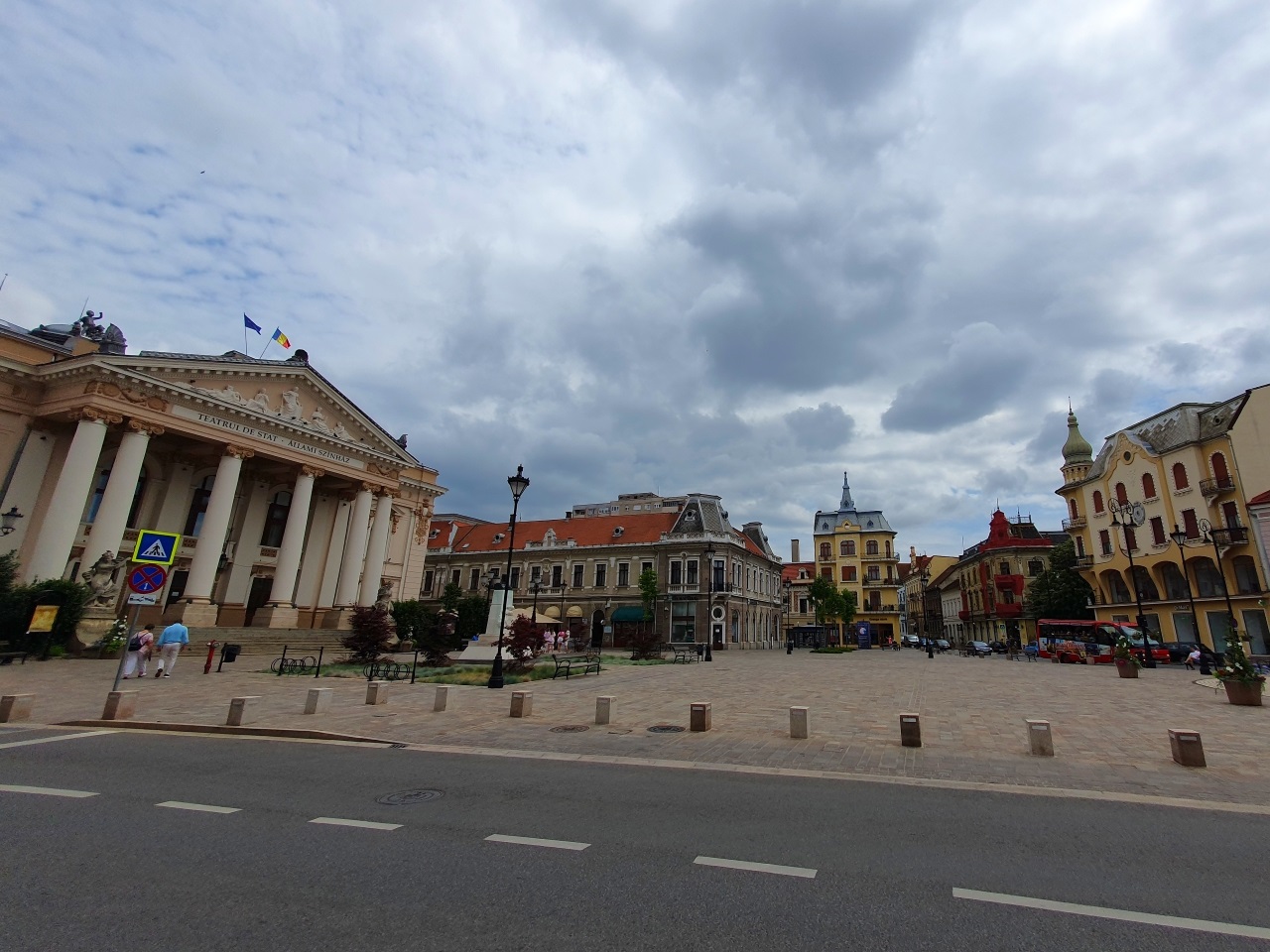
A different view from Ferdinand square with, from left to right, the Szigligeti Színház, the Bazaar, Kolozsváry House (the yellowish one in the center) and Poynár House (built in 1907, to the extreme right).
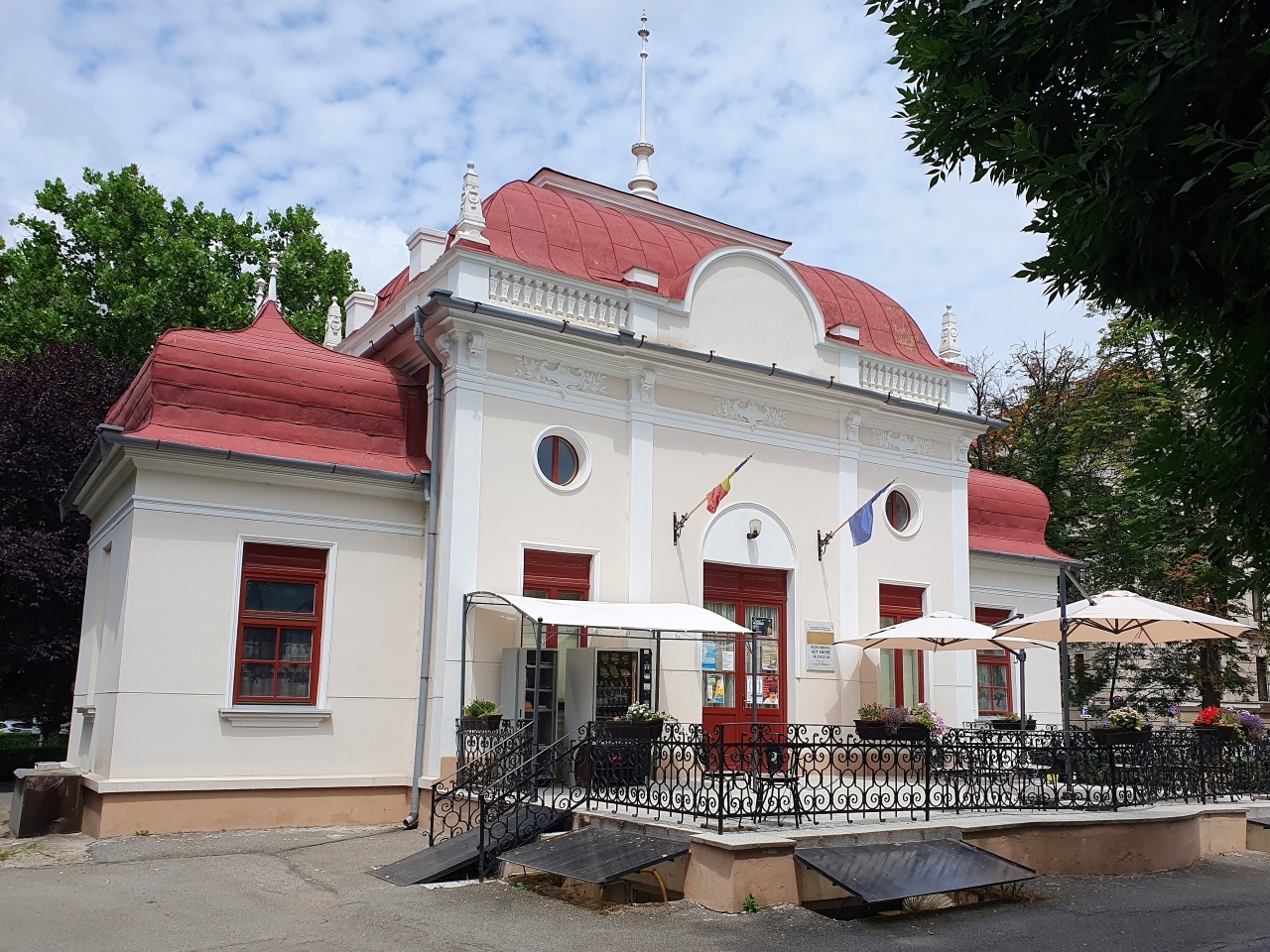
The Ady Endre Memorial Museum.

The former County Hall of Bihar (now the Prefecture and the Bihor County Council), built in 1760.

The Aurel Lazăr Memorial Museum.
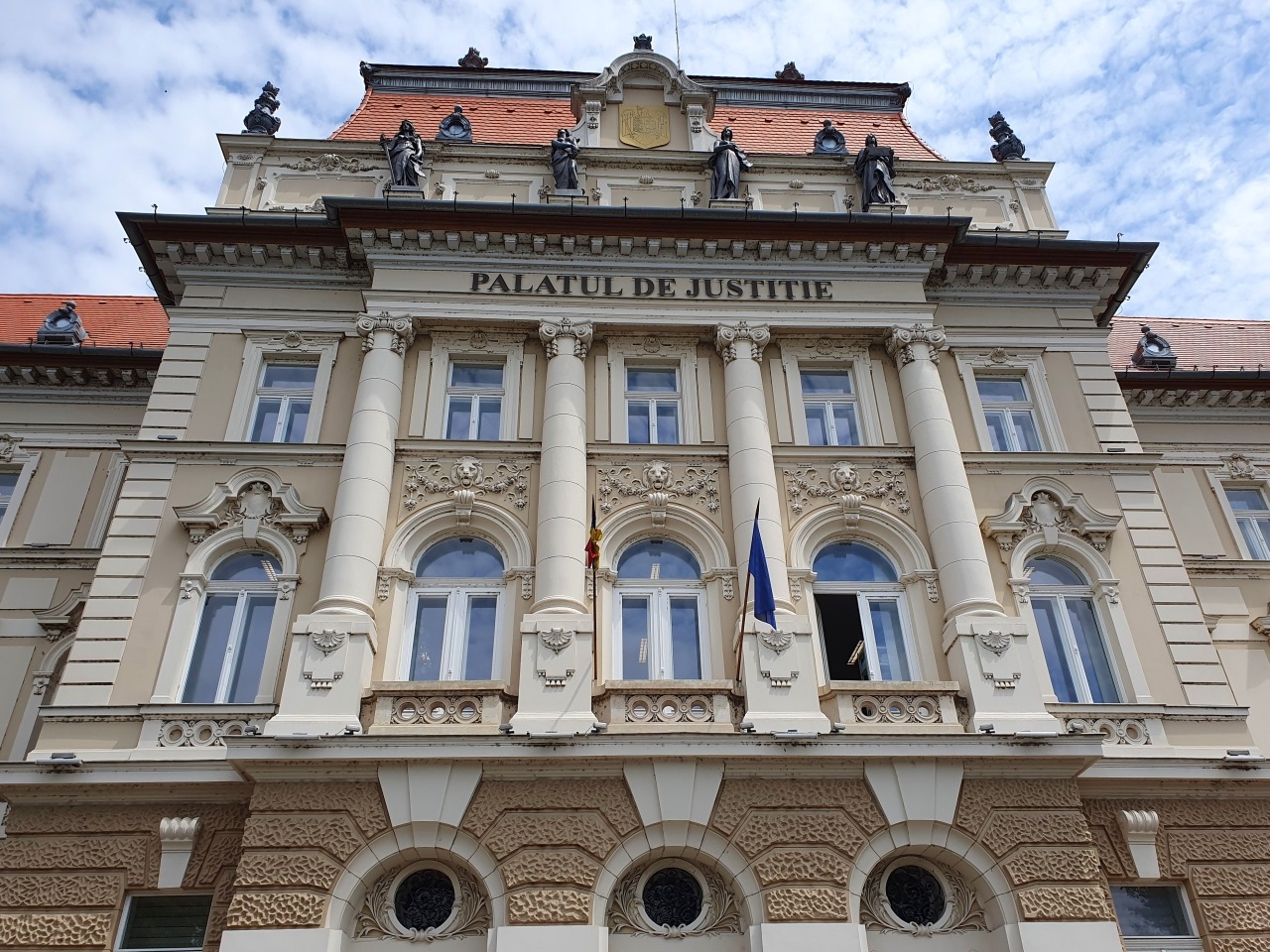
The Palace of Justice, built in 1898 in the eclectic style.

The former Austro-Hungarian Bank, now the Romanian National Bank.
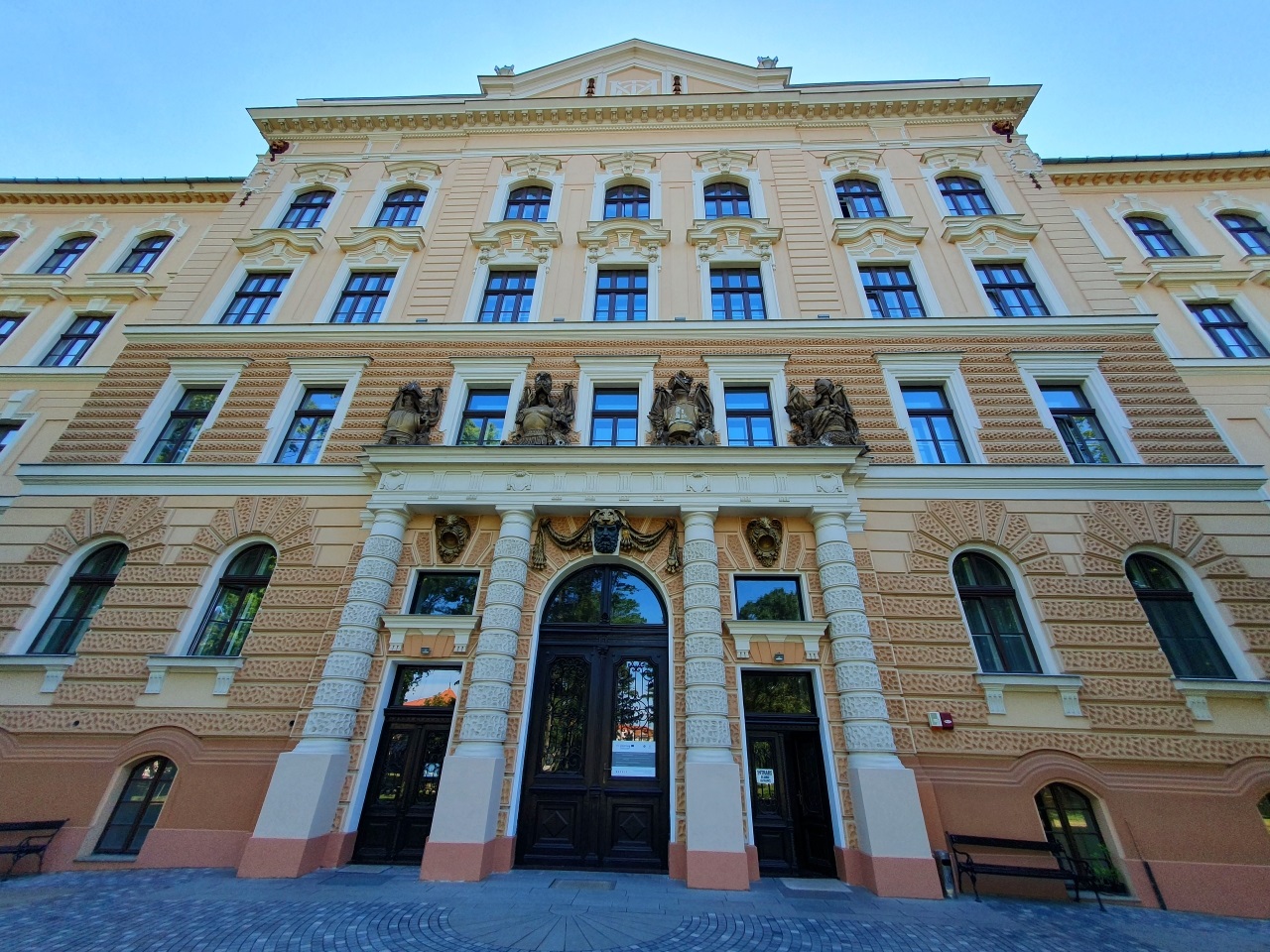
The former Military School, now the Țării Crișurilor Museum, built in 1895 in the eclectic and neo-Renaissance styles.
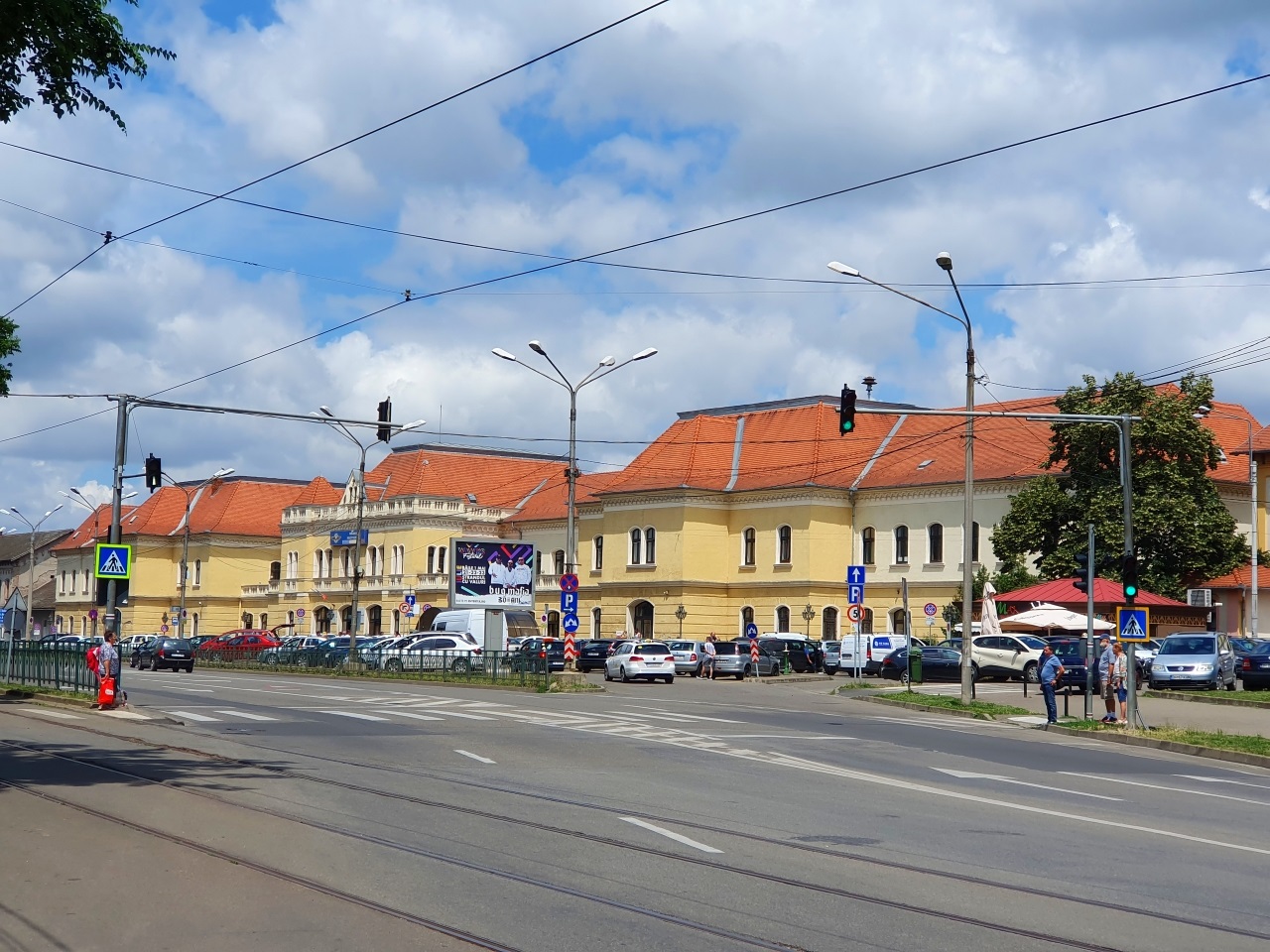
The main Railway Station of Oradea, built in 1857.
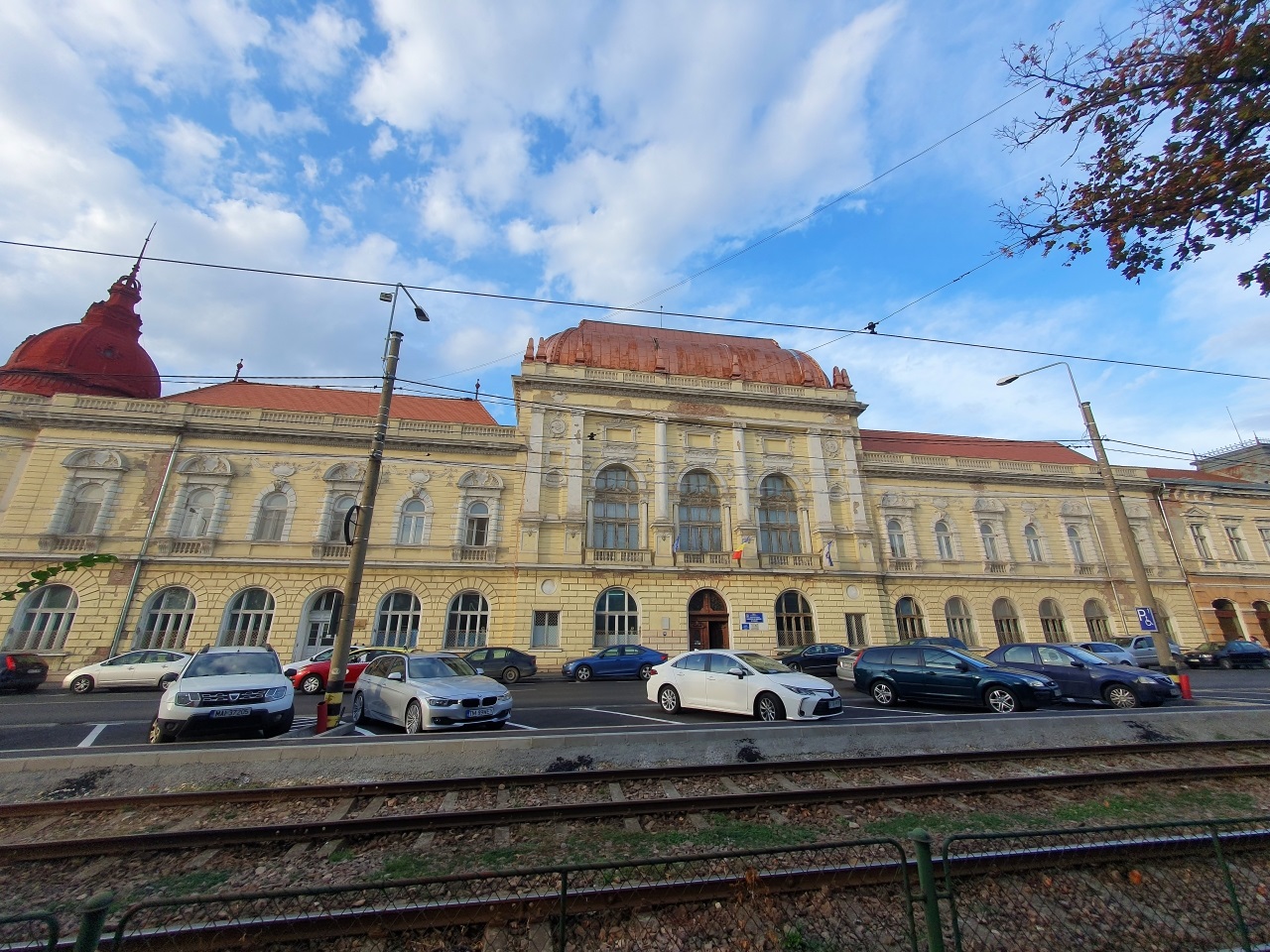
The Faculty of Medicine of Oradea University, former Market Hall, built in 1894 in the neo-Renaissance style.

The University of Oradea, former Hungarian Royal Gendarmerie School, built in 1911.
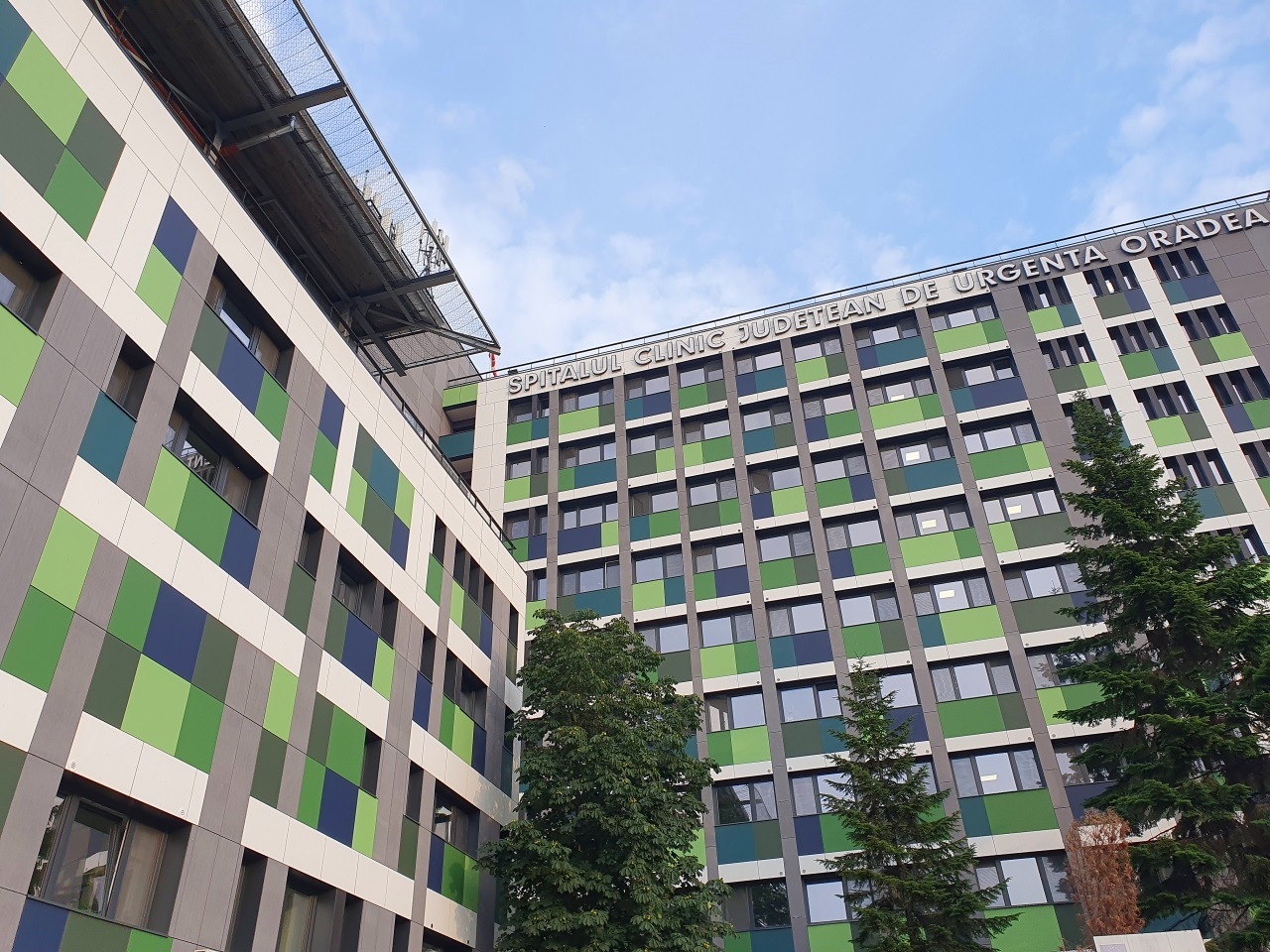
The Emergency County Hospital Oradea.

The Lotus Center Mall
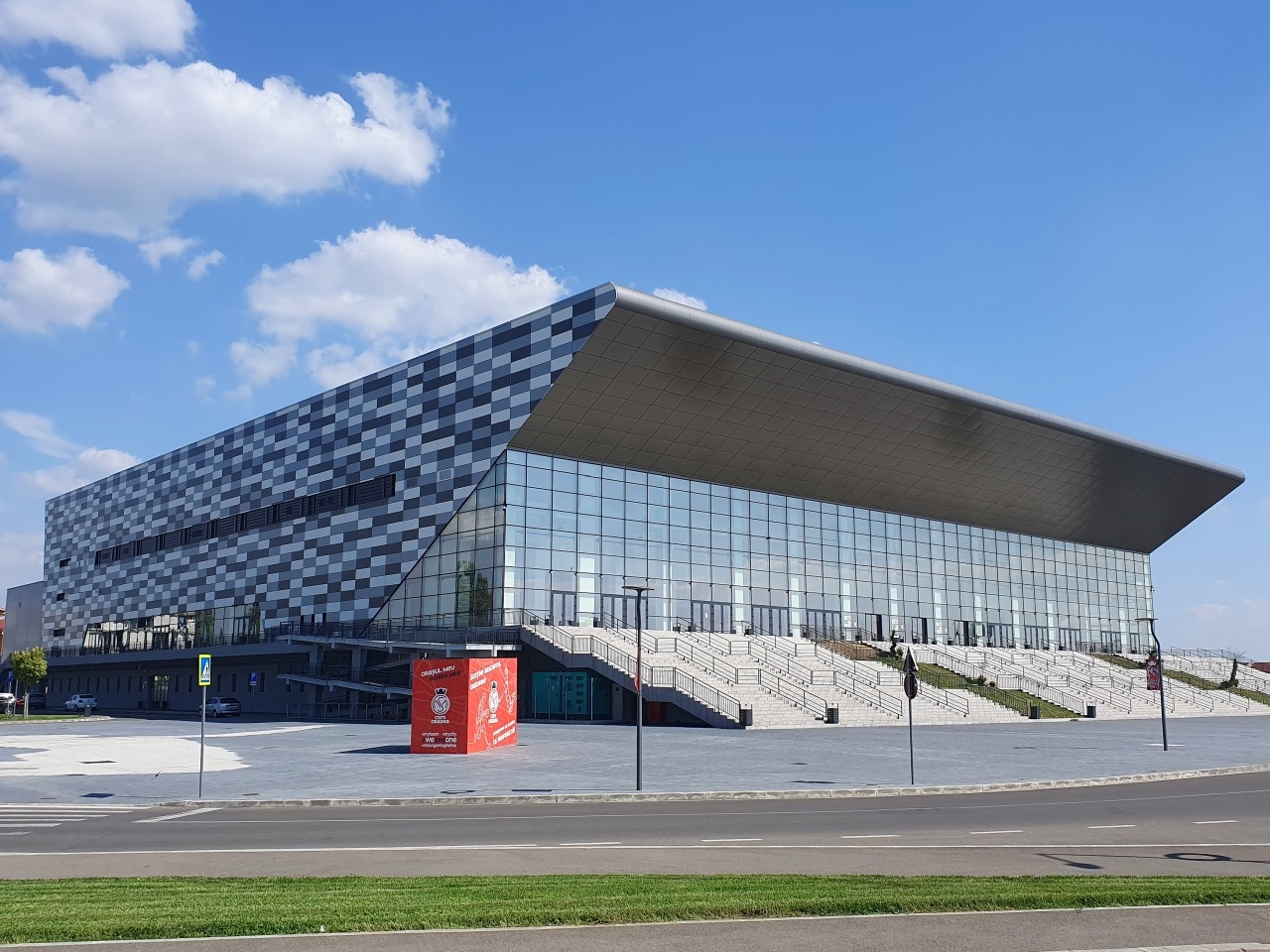
The Oradea Arena.
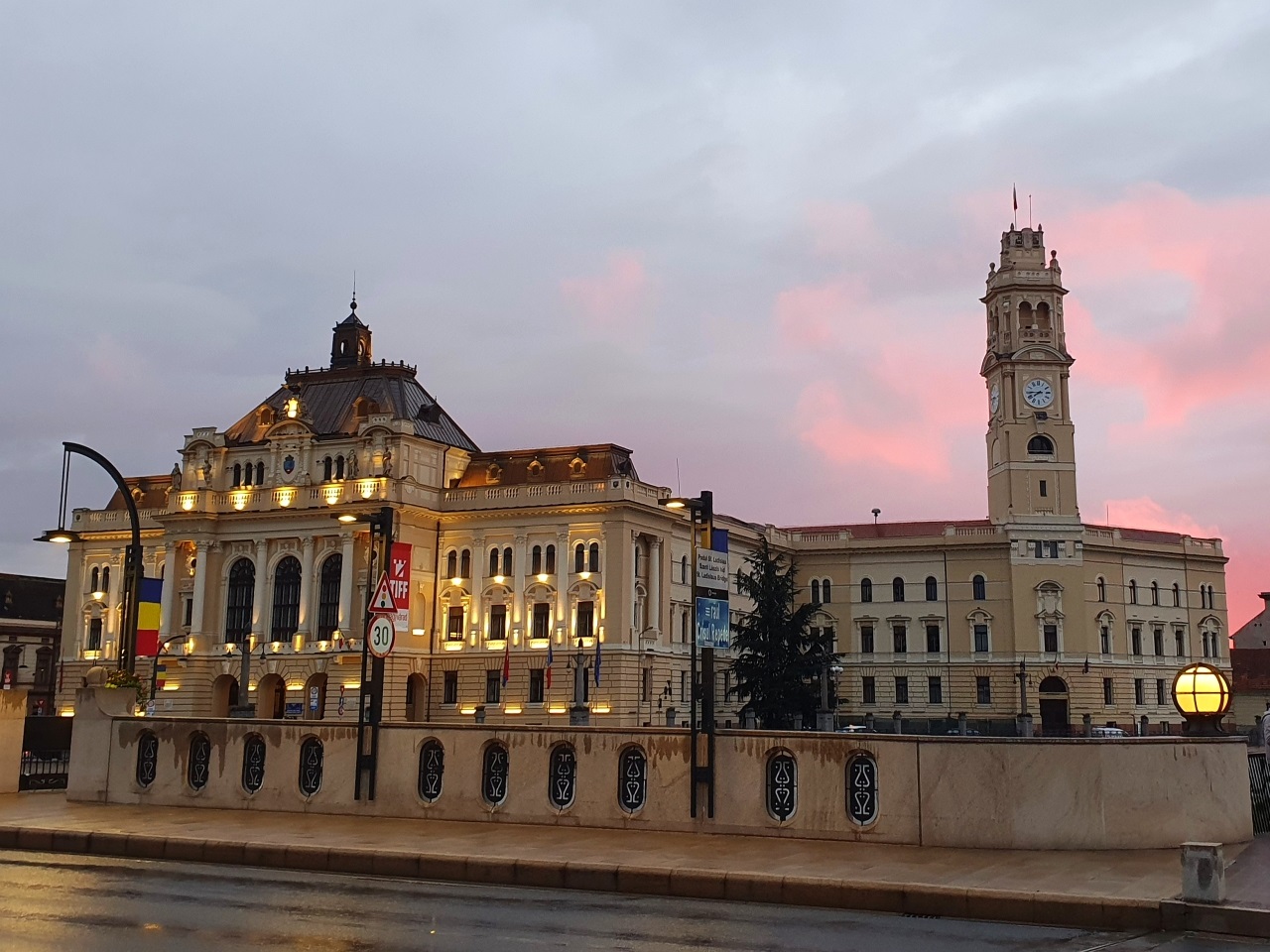 The town hall in the evening.
The town hall in the evening.
Nagyvárad


